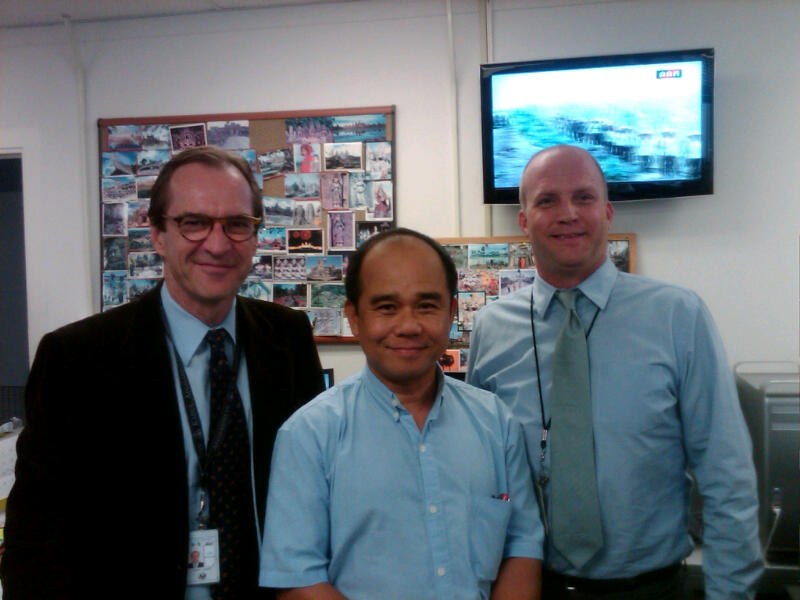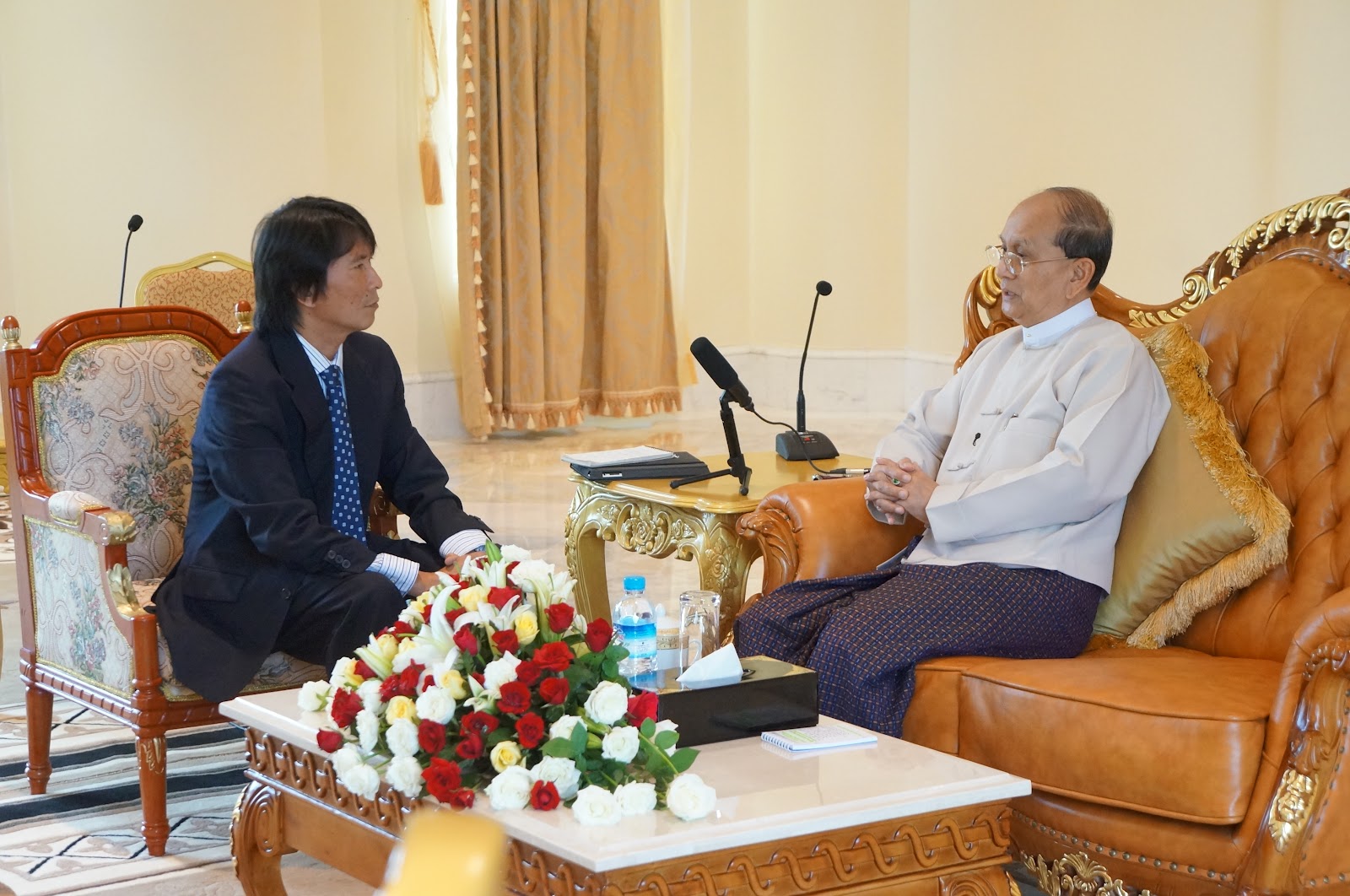This week’s post on history is the first in a two-part series focused on recollections of reporting during the 2007 Saffron Revolution, and discussion of the state of media freedom and society in Burma today. This week, Notebook interviewed Nancy Shwe, Director of Radio Free Asia’s Burmese service. RFA’s Burmese service won a Burke Award and a gold medal at the New York Festivals for its Saffron Revolution coverage.
See also part two, in which we interview Than Lwin Htun, VOA’s Burmese service chief about the same.
August/September 2007: Covering Burma’s Saffron Revolution [part 1], a Q&A with Nancy Shwe, Director of RFA’s Burmese service.
Q: What was your most memorable moment covering the Saffron Revolution in 2007?
A: We had began reporting in August on protests in Rangoon against the military junta when we were first told from an eyewitness that hundreds of Buddhist monks in Pakokku had begun to march in peaceful solidarity with the demonstrators. I remember how authorities were quick to respond, and we began to learn about monks being forcibly lassoed and tied, sometimes beaten. The eyewitness accounts of these incidents of mistreatment were very shocking given how revered and respected monks are in Burma.
For me, the other most memorable moment was Aung San Suu Kyi greeting the monks who marched to her home when she was under house arrest. It was an incredibly touching scene of her coming to the gate of her house and acknowledging the throngs of demonstrators there in person.

RFA Burmese Service Director Nancy Shwe
holding the gold medal, which the service won
for its Saffron Revolution coverage. Photo via RFA.
Q: What was RFA’s role in Burma in 2007? Have you seen that role change from 2007 to today?
A: RFA’s role was and still is to report the news with accuracy and speed to a public yearning to know what was and is happening in their country. Through our coverage of the Saffron Revolution, our journalists were keeping pace with rapid developments, hourly, every day. These day, with the changes happening in Burma, our reporters continue to keep pace for our listeners and audience.
There are some big differences between then and now. With the official lessening of media restrictions, we are fortunate now to have a team of reporters working within Burma instead of relying almost completely on news tips from citizen journalists and eye witnesses. But our role, delivering reliable news to the Burmese people, remains.
Q: Five years ago, could you anticipate the changes that have happened in Burma this year?
A: Not at all. To think Aung San Suu Kyi, who was under house arrest then, would be free and holding office in Burma’s parliament today would be a very unlikely prediction to make in 2007. I don’t think anyone could imagine the changes happening in Burma.
Q: What is your view of the state of media freedom today in Burma?
A: Media freedom is in a state of dramatic flux. Burma’s press is able to cover events, publish different perspectives, print the image of Aung San Suu Kyi – who was banned from appearing in any state-sanctioned publication until recently – and be critical. These are things that were unheard of just a little while ago. But the country’s censorship board still hasn’t relinquished control. At the same time, a newspaper, journal, or media outlet can be slapped down by a newly instated law designed to silence their voice.
The concept of media freedom is also very new for both sides, the government and the press. The government is not being reported on by an independent media. On the other side, high-quality, well sourced, and responsible journalism takes a little time to get a foothold and establish itself. It will be interesting to see how things progress and develop.
___



